A GPT agent is an AI assistant powered by transformer architecture that allows it to understand and respond in natural, conversational language. Such powerful tools can perform various tasks, such as generating content, providing feedback, and doing data analysis.
The first well-known GPT was released in 2018 OpenAI, which was followed by further iterations, such as GPT-2, GPT-3, and so on. Following these developments, OpenAI launched ChatGPT in 2022, which is nothing but a GPT agent tailored for generating mostly text-based responses.
However, there are other non-OpenAI GPT agents as well, such as AgentGPT and more as mentioned later in this article.
Significance of GPT Agents In NLP
GPT agents are a great fit for NLP applications, all thanks to their ability to generate human-like output and decent performance for several tasks, including text completion, language translation, summarization, question-answering, and more.
These deep learning models are pre-trained on large amounts of unlabeled text data, which enables them to take context and converse as a human would. GPT agents can also be fine-tuned with labeled data training, making them suitable for domain-specific NLP jobs, such as sentiment analysis, vacation planning, and content recommendation.
On the downside, training data bias can diminish the potential GPT benefits in the NLP realm, leading to incorrect or nonsensical outputs. In addition, GPT agents can struggle for tasks demanding a high degree of factual accuracy or anything beyond the scope of their training.
Many organizations are increasingly embedding GPT agents into AI-powered virtual agents for customer service, HR support, and internal IT help desks. These virtual agents leverage the conversational capabilities of GPT to handle user queries more naturally, resolve issues without human intervention, and maintain context over extended dialogues.
Benefits of GPT Agents
GPT agents have 7 prime benefits because of their natural language understanding, adaptability, context awareness, user engagement, and more as below.
- Improved efficiency: By automating redundant tasks, like product research, creating an article outline, or handling customer support—AI productivity agents can streamline multiple sequential tasks, enhancing the overall productivity and cost efficiency of the business.
- Enhanced decision-making: Since GPT agents are trained on large data sets, they provide valuable insights to companies by leveraging machine learning capabilities and data analytics, allowing them to make better-informed decisions.
- Competitive edge: By generating key insights and automating workflows, GPT agents can help companies stay ahead of the curve and beat the competitive market.
- Scalability: GPT agents can easily adapt and evolve per a business’s changing needs and requirements as their processes become more complex—making them scalable and highly versatile solutions.
- Cost efficiency: Building NLP applications based on pre-trained GPT agents can prove more economical compared to developing a custom NLP solution from scratch.
- Complex problem-solving: The ability of GPT agents to recall past actions and experiences and process a huge data set makes it an ideal solution to solve complex problems at hand.
- Faster Development: Leveraging pre-trained GPT agents can reduce the overall development time, which otherwise gets allocated for data pre-processing.
GPT Agents Limitations
GPT agents also come with a significant number of drawbacks and limitations, of which the main 6 are.
- Security concerns: GPT agents based on LLM models lack built-in features for data security and integrity.
- Data bias: Inheriting bias from the training data can lead GPT agents to provide incorrect output.
- Lack of multimedia handling: GPT agents are mostly designed to work with text, limiting their ability to work with multimodal data, such as audio, images, and video, without requiring additional development.
- Complicated debugging: Relating inaccuracies in the GPT agent outputs to the specific instances or patterns in the training data can be tough.
- Creative limitation: Though GPT agents can showcase human like creativity, their responses primarily originate from the training data without any novelty of their own.
- Limited common sense: These AI models often seem lacking the reasoning ability needed to deal with real-world problems.
How GPT Agents Work
GPT agents leverage transformer architecture to understand user input and respond conversationally. Here’s a simplified breakdown of the behind-the-scenes workflow in 4 steps.
- Processing: User input prompt is broken down into small chunks (a process known as tokenization) and standardized for optimum model performance.
- Contextualization: The GPT agent draws on its knowledge base, built from massive amounts of pre-trained text data, to understand the user intent and context. With additional developer integrations, some agents can access the internet or external sources in real-time to strengthen the model capabilities.
- Generation: The core of the output is autoregressive text generation. This generates one word at a time by considering the previously generated words in the ongoing output and limited conversational context. Besides, integration with other models can also let users create multimedia content within the same interface.
- Refinement: The outputs are continuously refined based on the evolving context and user feedback. GPT agents can also be fine-tuned with domain-specific data for greater accuracy and relevancy.
What GPT Agents Can do?
GPT agents have 5 main textual capabilities, including writing, translation, coding, reasoning, problem-solving as listed below.
- Writing: These AI tools can write in various styles and genres, almost matching human-level creativity. Some common use cases for AI writing are generic blog posts, product descriptions, essays, stories, ads, summarization, and even entry-level poetry & songs.
- Translation: GPT agents can translate text, including complex sentence structures and idiomatic expressions, with notable accuracy.
- Coding: Writing basic code snippets, elementary debugging, and automating repetitive tasks are one of the few things GPT agents can do to assist programmers.
- Reasoning & problem solving: Though their expertise is highly restricted to their training data, these AI utilities can decently reason and suggest solutions to rudimentary problems.
- Conversations: Talking in conversational language like humans is one of the prime attributes of GPT agents making them crucial in domains like customer support, answering questions, or simply engaging in natural language interactions.
GPT Agents Tools
There are several autonomous GPT agents, including Agent GPT and Auto GPT, demonstrating their real-life possibities.
1. Agent GPT
Agent GPT is a versatile and powerful open-source AI tool developed by OpenAI for configuring, creating, and deploying autonomous AI agents. One simply needs to specify the objective, and Agent GPT, based on the GPT 3.5 architecture, creates and runs a series of tasks to satisfy user intent.

Agent GPT generates domain-specific high-quality text in real-time based on its training data and optional internet connectivity that a user can also turn off. This is a free tool which runs upto five queries per 24 hours.
Though AgentGPT allows a user to create a custom agent, it already has various versions for tasks, such as internet research, brand analysis, vacation planning, web scraping, coding, composing emails, writing novels, and more.
2. Auto-GPT
Auto-GPT is an open-source autonomous agent utilizing GPT-4/GPT-3.5 API from OpenAI to complete user defined tasks. It divides the primary objective into small components and executes each sub-task by autonomously utilizing resources.

Developed by Toran Bruce Richards, Auto-GPT is publicly available on GitHub and will soon be available as a web app. For the meantime, one can install Auto-GPT as a CLI tool to execute, analyze & improve code, write documentation, debug, internet search, web scrape, make GitHub clones, etc.
3. BabyAGI
BabyAGI is an open-source, independently managed, GitHub-based Python script, which focuses on language learning, reinforcement learning, and cognitive development to create, prioritize, and execute tasks.

BabyAGI’s AI-powered task management system is underpinned with OpenAI and Pinecone APIs for its functionality.
It’s Python script creates tasks based on results of the previous tasks and user-defined objectives. BabyAGI banks on OpenAI NLP capabilities for task creation and vector databases (Chroma/Weaviate) for storing and retrieving results for context.
BabyAGI uses GPT-3.5 Turbo by default. However, it allows using other models as well.
4. Awesome GPTs
Awesome GPTs is a collection of community created cybersecurity focussed GPTs built with OpenAI’s ChatGPT.
Currently, the list of GPT agents on Awesome GPTs is 130+ strong, including tools for pentesting assistance, cybersecurity mentorship, generating hacker profile pics, WordPress security tips, spam detection, and more.
The only catch here is you’ll need a ChatGPT premium subscription to access Awesome GPTs.
How to Find GPT Agents
There are two simple ways to find GPT agents: with Google search or using GPT aggregator websites, as indicated below.
Google Search: Search GPT agents using specific use case terms and append the query with “GPT agents” or “GPT”. For instance, try searching for image generator GPT. A better way to do is using quotes for an exact match, like this: “image” generator “GPT.”
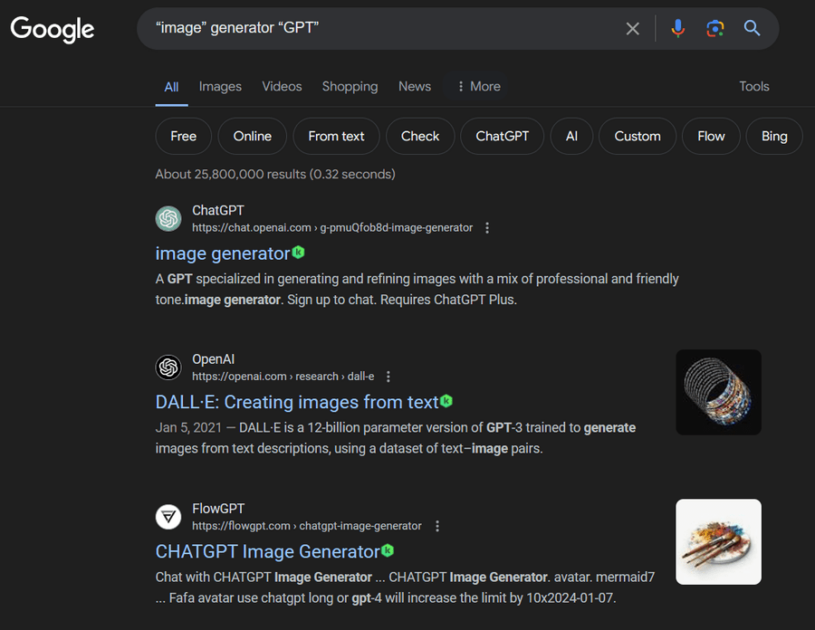
GPT agents aggregator websites: GPT aggregators are websites allowing users to search through 3rd-party GPT agents in multiple categories. A few of such aggregators are Supertools, SearchGPT, WhatPlugin, and more.
How to Create Your Own GPT Agent
The most straightforward way to create your own GPT agent is via ChatGPT, which works for ChatGPT Plus and higher subscriptions.
Step 1: Login into ChatGPT interface and click Explore.
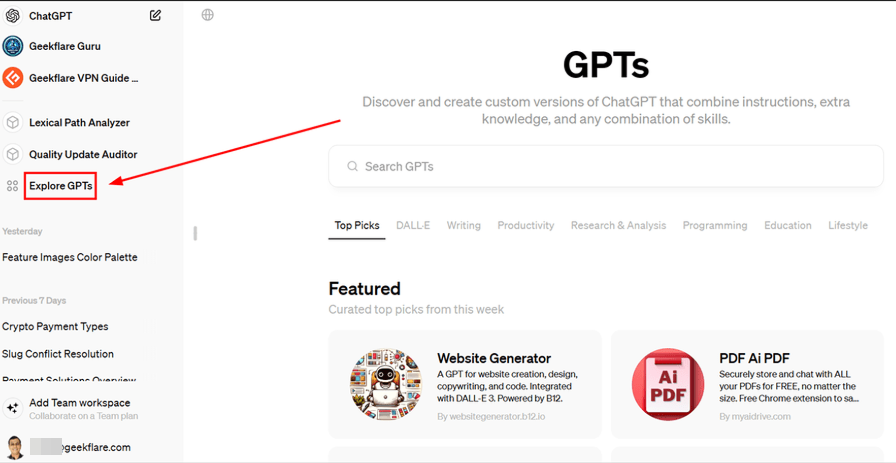
Step 2: Click +Create at the top right.
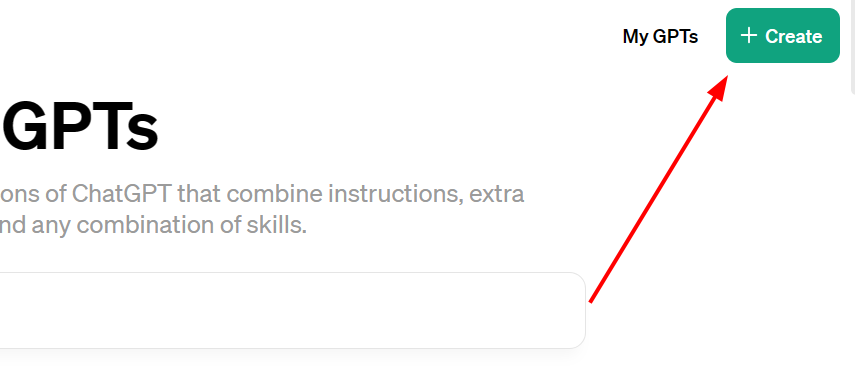
Step 3: This interface allows a user to create a custom GPT via entering the details, such as Name, Description, and Instructions.
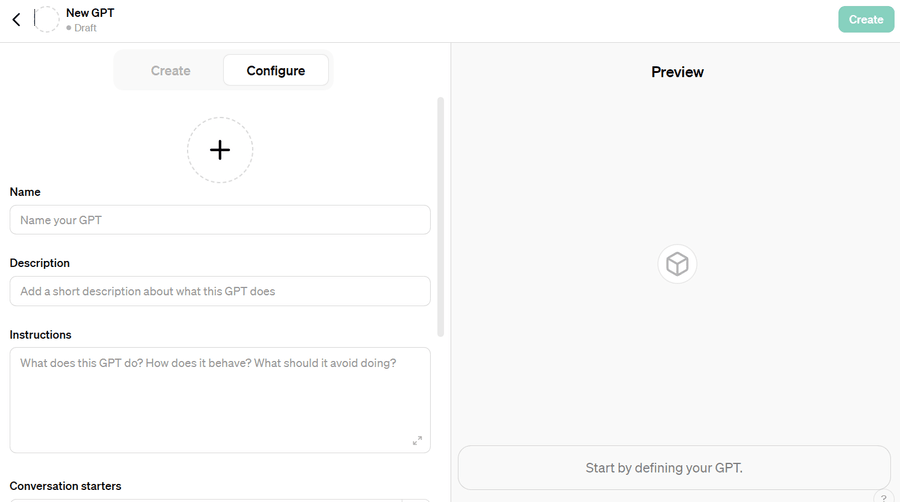
Subsequently, this GPT builder allows uploading specific knowledge base and turning on some features, including web browsing, DALL-E integration (for text to AI image creation), and Code Interpreter (for data analysis, etc.).
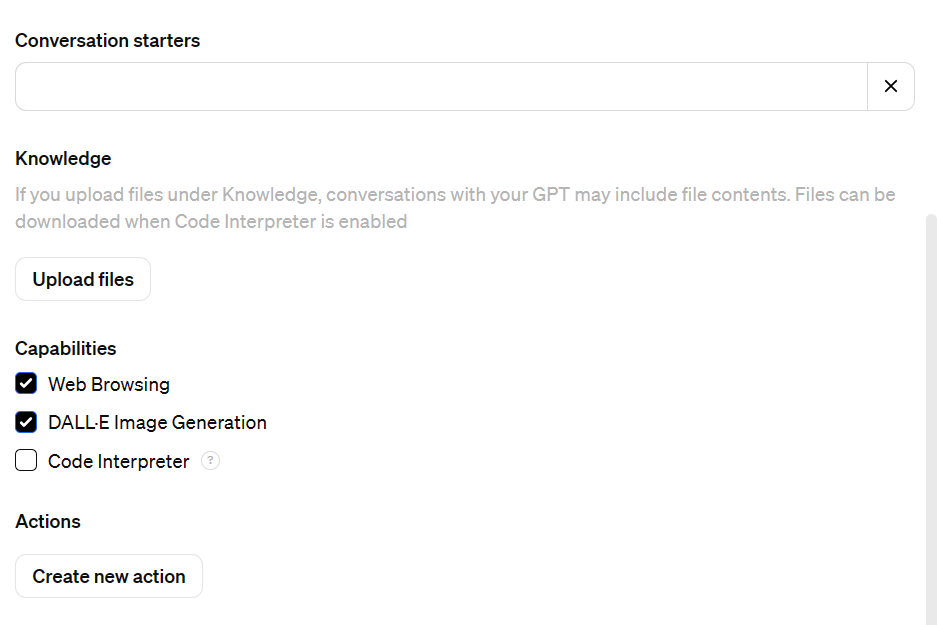
A user can also set custom actions with “Actions” at the bottom to allow interaction with external resources via 3rd-party APIs.
Step 4: The right panel previews the custom GPT agent in real time. One can check and make adjustments accordingly.
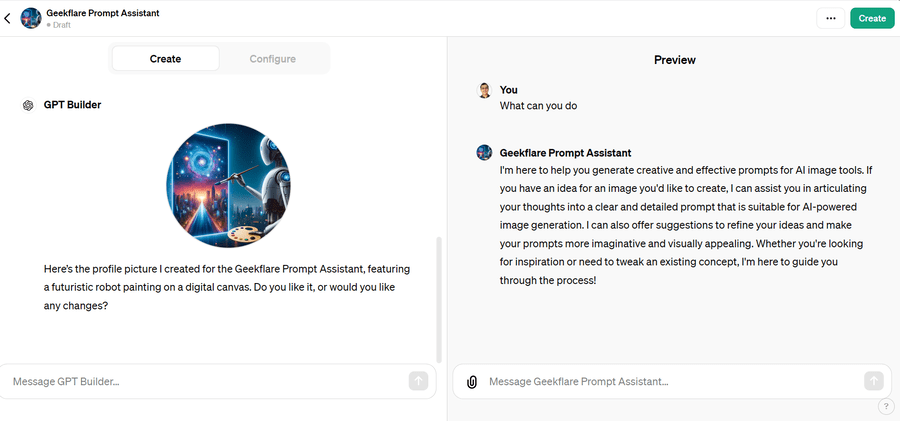
Step 5: The last step consists of publishing the custom GPT. Click Create to get the sharing options.
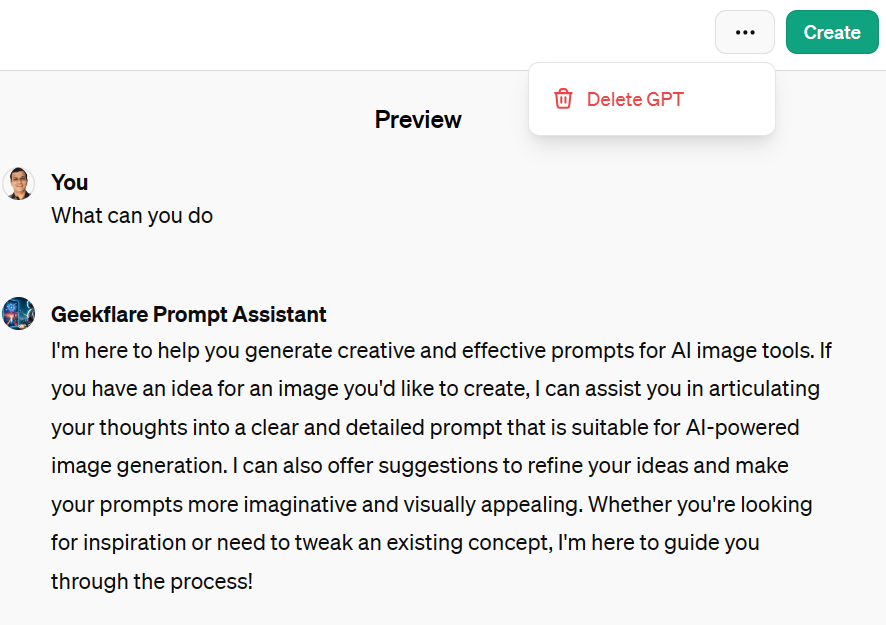
Users are allowed to keep the custom GPT agent to themselves or share with others. Besides, publishing it to the GPT store is another option, which can be monetized in the near future, per OpenAI.
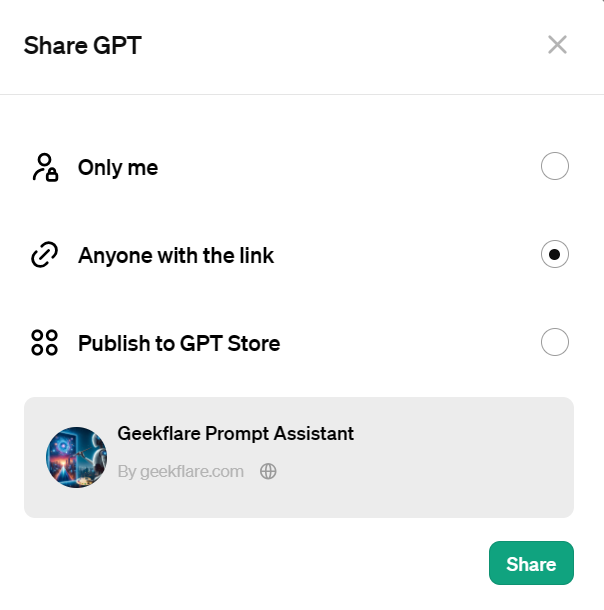
What does the Future for GPT Agents Look Like?
Currently, GPT agents are at their initial development phase, where researchers and developers are trying new things and use cases to incorporate autonomous agents into business workflows.
GPT agents can show up in every sector, automating processes like market research, data analysis, digital communication, generating code snippets, and debugging.
On an individual level, GPT agents could be the new personal assistants, helping users in daily life to do things like managing personal finances, scheduling meetings, smart home operation, planning trips, and more.
However, with the development and technological advancements of autonomous GPT agents, ensuring transparency, responsibility, data security, and eliminating bias will be crucial and a major challenge to overcome.
Frequently Asked Questions
Generative Pre-trained Transformer (GPT) is a type of AI model based on tranformer architecture for doing a wide range of tasks, such as writing, poetry, coding, planning, and more. These models are trained on vast amount of raw data, which help them in conversing like humans using day-to-day natural language.
GPT starts by taking and breaking user input into small parts. Next, it takes cues from its data base and the ongoing conversation to take context and replies autogressively.

